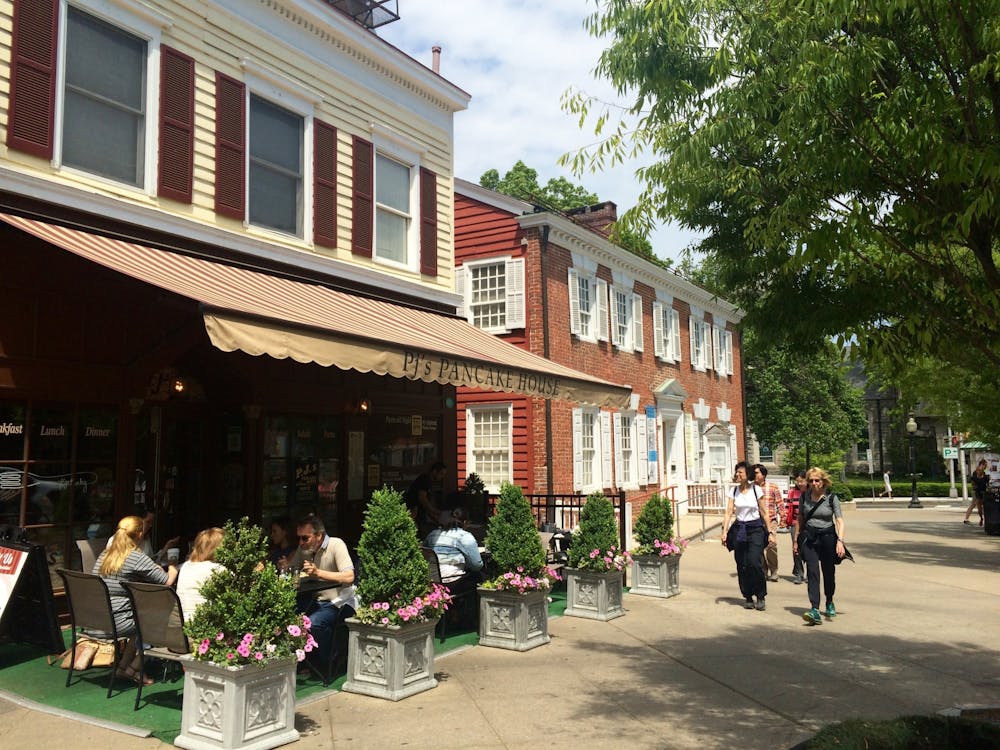"The Gates" in Central Park has been in the works for longer than most of Princeton's undergraduates have been alive. In less than two weeks, it will be gone.
Installation artists Christo Javacheff and Jeanne-Claude Denat de Guillebon are famous for wrapping buildings (such as the Reichstag) and other objects (including islands and coastlines), and executing other temporary, large scale installations. After 26 years of planning and waiting, they finally saw their vision unveiled on the morning of Feb. 12, 2005. The 7,500 gates meander through the entirety of Central Park, from the Plaza to Harlem and everywhere in between.
Last Saturday afternoon, the pleated, saffron-colored fabric, held up by 16-foot tall orange steel frames, billowed in a light breeze, that made the rip-stop nylon look far silkier than one would expect. Despite an earlier forecast to the contrary, the sky was clear and sunshine bathed the gates in warm light, making them stand out even more against the bleakness of Central Park in winter. Even as they disappeared into the trees, the gates gave the park a certain glow, peeking through the barren branches of trees.
According to Jeanne Claude and Christo's website, the work mimics the beauty of Central Park and the surrounding city: "the luminous moving fabric will underline the organic design of the park, while the rectangular poles will be a reminder of the geometric grid pattern of the city blocks around the park."
The park was crowded, but not overrun, with visitors walking alongside or under the gates. Because they are distributed evenly throughout the park, there is not one optimal place to view the gates. The project covers more than 23 miles of roads, bridges and hill. Ittakes full advantage of Central Park designer Frederick Law Olmstead's carefully laid-out vision.
At Princeton, student opinion ranges from unawareness of the existence of The Gates ("who's Crisco?" some ask), to excitement, to strong dislike. Nicole Oncina '05, who finds Christo's work repetitive and juvenile, subscribes to the latter category.
"Christo's work smacks of a spoiled child with enough money to play with monuments that we hold sacred, disrespecting them without any greater artistic purpose," she said.
The Gates cost more than $20 million and will remain up for only sixteen days. Jeanne-Claude and Christo intended The Gates to be short-lived because the ephemeral nature of the work creates a certain experience for the viewer: "Our memories of this experience are how the artwork changes us," their website explains.
Christo footed the entire bill himself, funding the project with money he raised from selling studies, drawings, scale models and lithographs from his various projects. All profits from merchandise associated with the Gates exhibit will be donated to the charity "Nurture New York's Nature."
Kelli Hughes '06, an officer in the Stella Art club, took a more moderate approach. "I'm not a huge fan of installation art...but even though it's not my thing, it's monumental historically," she commented.
Both Hughes and Oncina appreciate the effect The Gates' publicity will have on awareness of the art world in general. "I am happy that public art has gotten so much publicity thanks to The Gates, and I hope that New York artists will see a rise in public commissions," Oncina said.
Hughes added that she encourages "people to go see any kind of art — it broadens appreciation of art in general."

Hughes and Oncina both intend to visit the gates in person. "I want to walk through them and see them up close," Hughes said.
Oncina, on the other hand, plans on going if only to gather ammunition to criticize the work. "But who knows," she added, "maybe seeing it in all of its glory will change my mind."
The sense of immediacy and transience of seeing The Gates in person is something that photographs cannot convey. The last day to see the Gates is on Feb. 27; they will be dismantled and recycled the following morning.







